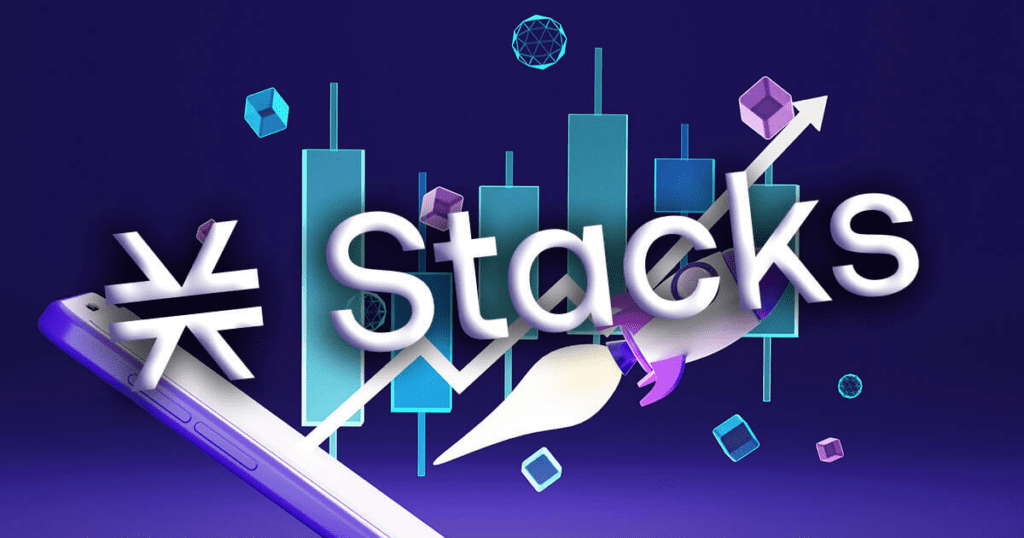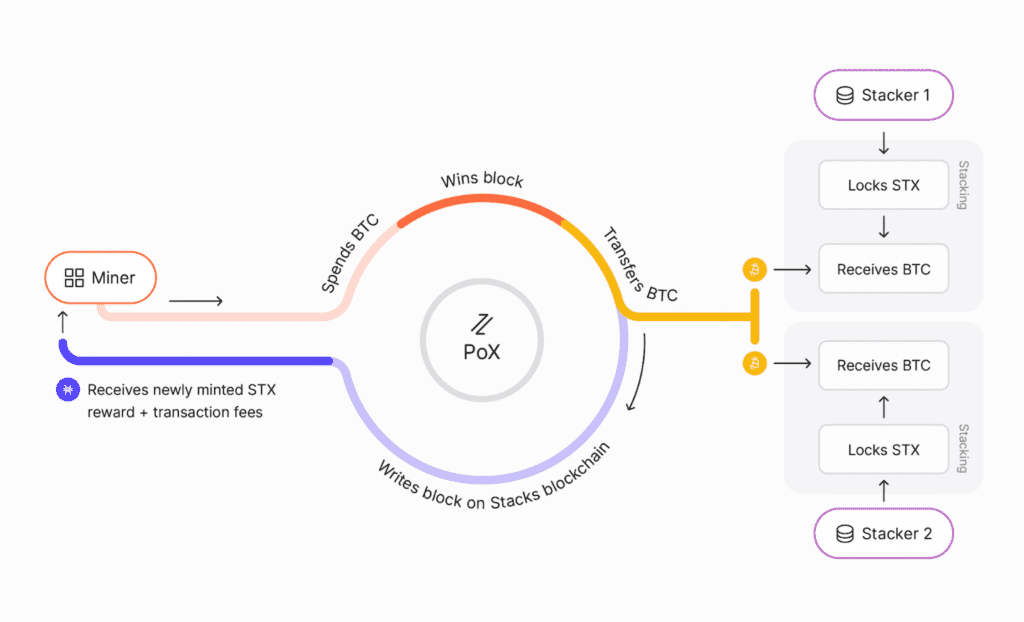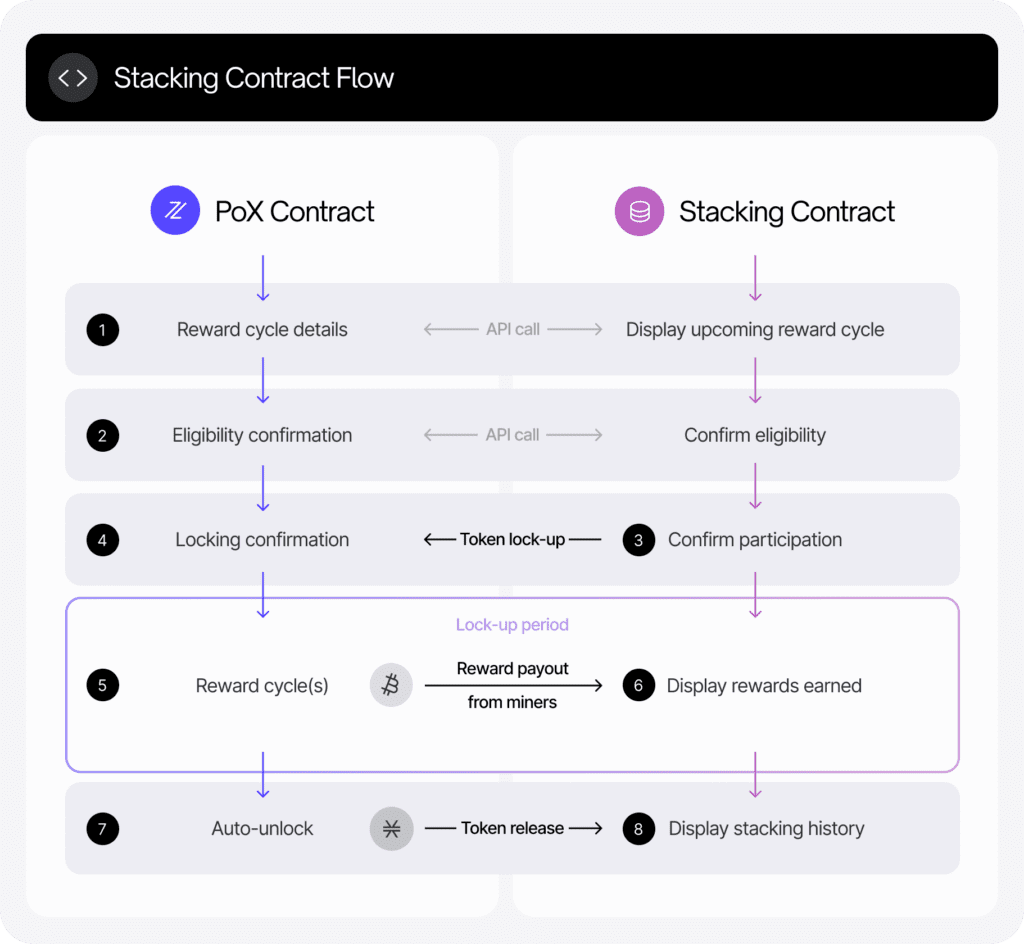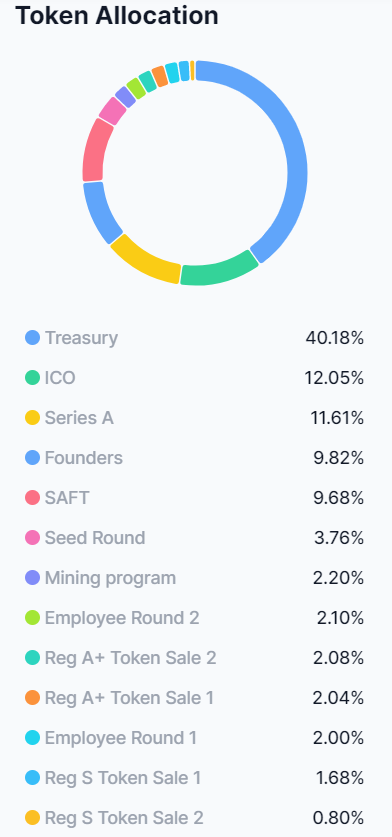Bitcoin is undeniably the most secure blockchain and widely accepted cryptocurrency in the world. However, Bitcoin has some limited capabilities that affect global adoption, such as the lack of advanced smart contracts needed for DeFi applications. Therefore, Stacks Network (STX), a Layer 2 that supports Smart Contracts and helps expand the Bitcoin network, was born. The project under review is ushering in a new era for Bitcoin functionality. So what is Stacks Network (STX), and how does it work?
What is Stacks Network?

Stacks is a layer-2 solution of Bitcoin powered by the Stacks token (STX), extending the functionality of Bitcoin. Built on top of the Bitcoin blockchain, Stacks brings smart contracts to Bitcoin without the need to fork or make any changes to Bitcoin. This opens up an entire ecosystem of Bitcoin decentralized applications (dApps) and non-fungible tokens (NFTs) that leverage the security and decentralization of the Bitcoin blockchain.
Stacks was originally founded as “Blockstack PBC” by two former Princeton University students, Muneeb Ali, and Ryan Shea. In 2017, Blockstack PBC raised $50 million in a token sale, and in 2018 launched a testnet in Q2, followed by a mainnet in Q4.
2019 saw the Stacks public offering become the first regulated token sale by the US Securities and Exchange Commission (SEC). That same year, STX was listed on several major crypto exchanges, including Coinbase, and its price started to rise.
In 2020, STX hit an all-time high of over $2.50, making it one of the top-performing cryptocurrencies of the year. Later that year, Blockstack rebranded to Stacks to separate the ecosystem and open-source project from Blockstack PBC, which was renamed Hiro Systems PBC.
How does the Stacks Network (STX) work?
Stacks is built on top of the Bitcoin blockchain, using Bitcoin as the payment layer. The Stacks network links to Bitcoin through a Proof-of-Transfer mechanism, which runs parallel to Bitcoin’s Proof-of-Work (PoW) consensus mechanism. Proof-of-Transfer (PoX) is an adaptation of Proof-of-Burn (PoB). With PoB, users “burn” or destroy their own Bitcoin to mine new blocks on the Stacks network. Burned Bitcoin recycling has been done in Bitcoin’s Proof-of-Work consensus mechanism.

However, with PoX, miners have to send Bitcoins to specific Bitcoin addresses participating in consensus instead of burning Bitcoins. Block generation on the Stacks blockchain is determined through grading, where miners compete to be selected to generate the next block by sending Bitcoins to randomly determined addresses. This process ensures that block production is decentralized and fair.
To build new blocks in the Stacks blockchain, miners commit the block hash of each Stacks block to the Bitcoin chain using OP_RETURN in Bitcoin transactions. This means that the state of the Stacks blockchain is settled on the Bitcoin blockchain and benefits from its immutability, and stack nodes can use this data stored on the Bitcoin chain to verify the integrity of the Stacks blockchain state. The metadata from newly mined Stacks blocks is anchored to every Bitcoin block, allowing users to verify the standard Stacks chain through Bitcoin blocks.
In addition, since only the block hash of the Stacks block is written to the Bitcoin chain, it allows blocks consisting of thousands of transactions without taking up additional Bitcoin block space.
What makes Stacks Network so special?
The founders of Stacks spent eight years developing the project. It is because of this in-depth research and subsequent development of a solid foundation that Stacks offers several key features that make it unique from other networks:
Proof-of-Transfer (PoX)
Stacks uses a Proof-of-Transfer (PoX) consensus mechanism where “stackers” play an important role in maintaining the security of the blockchain by voting on which chain forks they want to support and deciding if they want to support branching that chain stacking rewards are distributed every cycle. With the sBTC upgrade of the Stacks network, stackers will have a new role of signing threshold signature wallets containing pegged Bitcoin.
Stacking

Stacking is temporarily locking down STX tokens to support the Stacks blockchain. By locking STX, you provide valuable consensus and security through Proof-of-Transfer (PoX), the Stack’s only consensus mechanism. The stacker earns the original BTC that miners on Stacks switch to the protocol to mine the new STX. A stacking cycle is 2,100 Bitcoin blocks long or about two weeks. You can check the status of the current cycle, including the estimated minimum reward, at stacking.club/cycles/current.
Post-conditions
Post-conditions are unique to the Stacks chain and can be added to transactions to provide additional safety measures. If the execution of a transaction violates one or more of the posting conditions, the entire transaction will be reversed. The Xverse Wallet makes it easy to view and understand the conditions posted on the transaction, allowing you to confirm that the transaction is safe before proceeding.
Qualified by SEC
Stacks is the first cryptocurrency to receive an SEC certificate for sale in the US, allowing it to launch a $28 million Reg A+ cash offering for its STX tokens in July 2019.
Bitcoin Finitude (coming soon)
Stacks is built on top of the Bitcoin blockchain, which means it uses the same underlying technology and security features as Bitcoin. In addition to having a strong foundation in immutability, it also allows developers to build applications that can take advantage of the security and decentralization of the Bitcoin blockchain.
STX tokens

STX is the native token of Stacks Network. Instead of using electricity, Stacks miners use mined BTC to mine newly minted STX tokens. Stack owners can then lock their STX by consensus to earn BTC, making STX the only crypto asset natively priced in BTC and yielding BTC earnings. This creates an economic incentive for users to secure the network and contribute to its development.
Basic information
- Token Name: Stack
- Symbol: STX
- Total supply: 1,818,000,000 VND
- Circulating supply: 1,380,732,543.75 STX
Token Allocation

Token utilities
- Administration
- Paid fee
- Incentivize Nodes to create blocks and validate data storage
Conclusion
Stacks Network is currently the most comprehensive Layer 2 on Bitcoin, with infinite scalability when supporting Subnets, helping to develop the Bitcoin network and bring BTC to DeFi. But still ensure the safety of the main network and help dApps built on Stacks inherit the security and decentralization of the Bitcoin network.
Stacks Network was originally founded with the mission of empowering people to take control of their data and assets by providing a more accessible decentralized economy and user-owned internet. With its commitment to bringing decentralized finance (DeFi) to Bitcoin, its unique features, and innovative use of the Bitcoin blockchain, the Stacks cryptocurrency platform clearly has promising growth potential.
DISCLAIMER: The information on this website is provided as general market commentary and does not constitute investment advice. We encourage you to do your research before investing.
Join us to keep track of news: https://linktr.ee/coincu
Foxy
Coincu News























